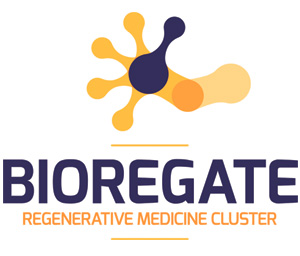Project abstract
Due to their properties close to those of human tissues, hydrogels are good candidates to serve as matrices allowing for cells growth to be applied in tissue engineering or cell therapy. In order to minimize the impact of invasive surgery, injectable hydrogels based responsive polymers were developed. Nevertheless, depending on their nature these materials often suffer from various disadvantages such as poor mechanical properties, long solidification or in situ crosslinking times, limited biocompatibility, non-biodegradability, very low porosity and/or not controlled or an inability to be a vector for drugs or biomolecules delivery.
In this context of seeking the ideal material to better respond to the very demanding requirements of tissue engineering, we plan to develop injectable nano and microporous multicompartimentalized photo-crosslinked hydrogels to test their potential in tissue engineering and cell therapy. These hydrogels are based on aqueous solutions composed of an amphiphilic triblock copolymer based on poly ethylene oxide (PEO) bearing photopolymerizable groups (developed by IMMM partner) associated to its analogous linear PEO or dextran. These mixtures can indeed be homogeneous at room temperature and lead to phase separation, which can be induced by a temperature increase to 35-40 °C, leading to a transient nano and microporous micellar gel.
The structure of the latter can be frozen very rapidly (within a few seconds) by light irradiation. It would then be possible to introduce, in these solutions, cells (mesenchymal stem cells or hepatocytes derived from pluripotent stem cells), hydrophobic drugs (that would locate into the micellar cores of the transient gel) and biomacromolecules that could be localized in various compartments of the hydrogel according to their chemical affinities. By finely controlling the composition of the hydrogel and the phase separation process, injectable materials exhibiting a wide range of mechanical properties and controllable porosity may be obtained.
In the perspective of using these hydrogels in regenerative medicine, two objectives will be pursued:
- The use as a template for the development and differentiation of mesenchymal stem cells to test their potential for tissue engineering.
- The use for encapsulating and protecting liver cells against immune rejection in a context of severe liver disease induced by drugs such as paracetamol.
The structure of biphasic hydrogels will be studied by confocal microscopy and scattering techniques (light, X-rays, neutrons). The mechanical properties will be characterized by rheology.
Cytocompatibility in 2D and 3D as well as their biocompatibility will be studied (the proof of their non-cytotoxicity has already been established). The diffusion properties of biomacromolecules of biological interest will also be studied by confocal microscopy (FRAP technique).

